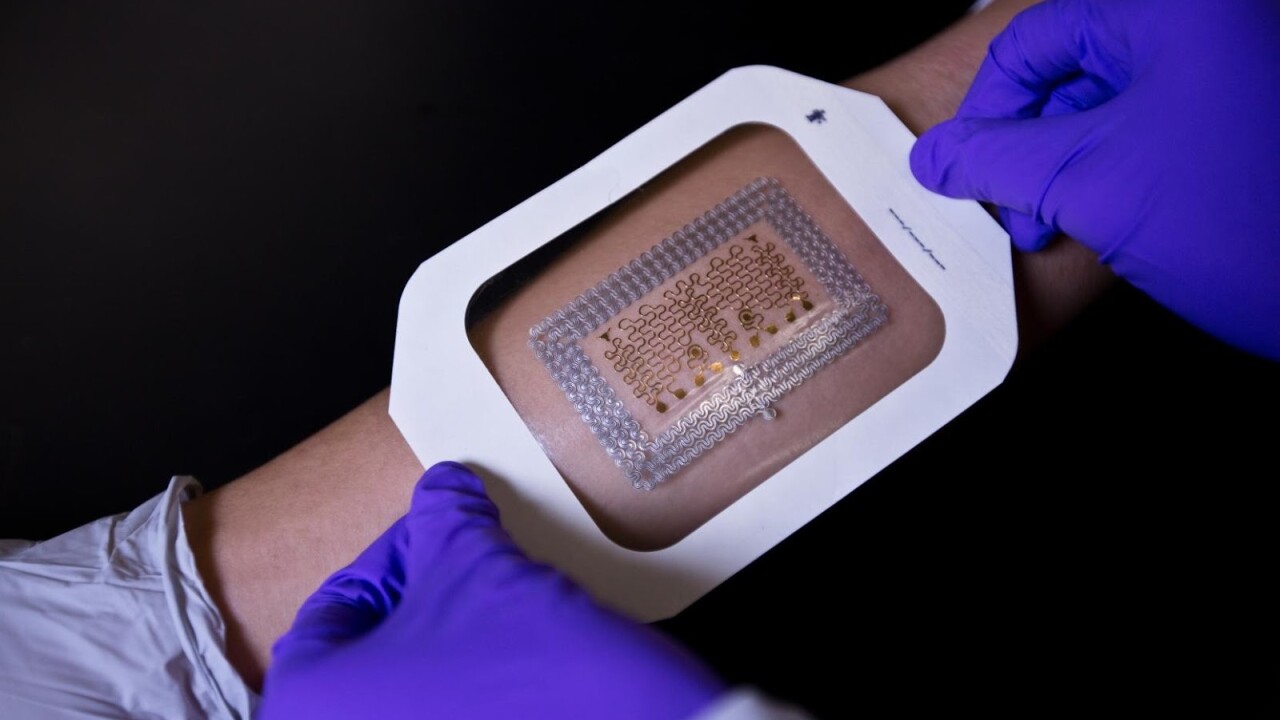
From FitBits to Apple Watches, wearable tech is becoming part of our daily lives. But now that we can track our steps and how well we’re sleeping, what’s next? To find out, I asked 11 entrepreneurs from Young Entrepreneur Council (YEC) the following question:
With fitness monitors and sleep trackers taking off, what do you think will be the next big piece of wearable tech, and why will it do well in the market?
1. Happiness and emotional monitors
 As our brain’s patterns and chemical fluctuations become more understood, we’ll soon be able to easily deter shifts in emotions and moods that impact our output. We often don’t pay attention to our moods during the day, and wearables could help offer insight, almost like a coach. Moods are often just simply triggered by external factors (like “road rage” when driving or an incessant employee who triggers a judgmental attitude) or physical conditions (like “hanger,” which makes you terse and crabby because you skipped lunch). – Beck Bamberger, BAM Communications
As our brain’s patterns and chemical fluctuations become more understood, we’ll soon be able to easily deter shifts in emotions and moods that impact our output. We often don’t pay attention to our moods during the day, and wearables could help offer insight, almost like a coach. Moods are often just simply triggered by external factors (like “road rage” when driving or an incessant employee who triggers a judgmental attitude) or physical conditions (like “hanger,” which makes you terse and crabby because you skipped lunch). – Beck Bamberger, BAM Communications
2. Smart fitness monitors
 Are today’s fitness monitors providing you the kind of insights you need to change your lifestyle and behavior? I don’t think so. In the coming months, these devices will become much smarter using machine learning so that they can tell you what to do and when to do it. The current state is a passive one where you know what you did, the future state is an active one where these devices are your actual health partners. This will need an innovation in both hardware and software, but more so in machine learning tailored to digital health. – Ashu Dubey, 12 Labs
Are today’s fitness monitors providing you the kind of insights you need to change your lifestyle and behavior? I don’t think so. In the coming months, these devices will become much smarter using machine learning so that they can tell you what to do and when to do it. The current state is a passive one where you know what you did, the future state is an active one where these devices are your actual health partners. This will need an innovation in both hardware and software, but more so in machine learning tailored to digital health. – Ashu Dubey, 12 Labs
3. Mindfulness assistance devices
 Mindfulness, mental stress and performance is the next biggest area of self-improvement coming to the world. As the white-collar economy and the speed of life increases, everyone will be looking for an edge both in performance and happiness. – James McDonough, SEE Forge
Mindfulness, mental stress and performance is the next biggest area of self-improvement coming to the world. As the white-collar economy and the speed of life increases, everyone will be looking for an edge both in performance and happiness. – James McDonough, SEE Forge
4. Attention monitors
 In the attention economy of the web, things are constantly competing for our mental space. Those who are able to monitor and guide where they are focusing their attention will be able to be more productive, and be generally happier. Already, mindfulness and meditation apps like Pomodoro and Headspace are starting to take off. When combined with wearable technology, these tools become much more powerful. Imagine getting a notification when you’re about to get distracted while doing some important task, and actually training your focus, attention and concentration to be better. – Mattan Griffel, One Month
In the attention economy of the web, things are constantly competing for our mental space. Those who are able to monitor and guide where they are focusing their attention will be able to be more productive, and be generally happier. Already, mindfulness and meditation apps like Pomodoro and Headspace are starting to take off. When combined with wearable technology, these tools become much more powerful. Imagine getting a notification when you’re about to get distracted while doing some important task, and actually training your focus, attention and concentration to be better. – Mattan Griffel, One Month
5. Wearable solar jackets
 We are becoming more and more reliant on our smartphones and when the battery dies, we are lost. There is this cool new product, wearable solar, that charges your device through solar power. Stuck somewhere with a dying phone? Slip on a jacket and head outside to power up your device. – Elliot Bohm, Cardcash.com
We are becoming more and more reliant on our smartphones and when the battery dies, we are lost. There is this cool new product, wearable solar, that charges your device through solar power. Stuck somewhere with a dying phone? Slip on a jacket and head outside to power up your device. – Elliot Bohm, Cardcash.com
6. Smart contact lenses
 The next phase isn’t fitness, but health and medicine. Google in particular has been eyeing contact lenses as a way to monitor glucose levels — a $10 billionmarket. – Sam Saxton, Salter Spiral Stair and Mylen Stairs
The next phase isn’t fitness, but health and medicine. Google in particular has been eyeing contact lenses as a way to monitor glucose levels — a $10 billionmarket. – Sam Saxton, Salter Spiral Stair and Mylen Stairs
7. Software to make sense of wearable data
 I think the next innovation that will grow the wearable tech market grow is an app or software that will make it easy for people to draw bigger conclusions. I’m obsessed with data – beyond my Fitbit, which I use to monitor activity and sleep, I track my temperature every morning and record what I eat, drink and the supplements I take. I think the next innovation is an open-source platform that combines all data with bigger-picture results/events, like annual physicals, information on injuries, illnesses, headaches, fatigue, etc. This way users can spot their health and wellness trends easily. – Brittany Hodak, ZinePak
I think the next innovation that will grow the wearable tech market grow is an app or software that will make it easy for people to draw bigger conclusions. I’m obsessed with data – beyond my Fitbit, which I use to monitor activity and sleep, I track my temperature every morning and record what I eat, drink and the supplements I take. I think the next innovation is an open-source platform that combines all data with bigger-picture results/events, like annual physicals, information on injuries, illnesses, headaches, fatigue, etc. This way users can spot their health and wellness trends easily. – Brittany Hodak, ZinePak
8. High-tech fabric
 The biggest opportunity in the wearable space is to embed the sensors into the fabric of clothing. Forcing someone to wear a device creates a barrier to growth. Embedding the technology into apparel will allow the most natural integration with fashion. – Aaron Schwartz, Modify
The biggest opportunity in the wearable space is to embed the sensors into the fabric of clothing. Forcing someone to wear a device creates a barrier to growth. Embedding the technology into apparel will allow the most natural integration with fashion. – Aaron Schwartz, Modify
9. Virtual reality headsets
 At SXSW 2016 one of the obvious trends was the interest by most technology companies in virtual reality and the applications of VR in the gaming and business world. Oculus Rift, PlayStation VR and the HTC Vive Pre are a few of the players in this space; players with a variety of integrations beyond gaming. As VR headset makers succeed in making the virtual reality experience so real that we forget the computer/gaming device, it’s only a matter of time until these headsets are fully integrated into society with myriad applications and experiences. – Marcela De Vivo, Brilliance
At SXSW 2016 one of the obvious trends was the interest by most technology companies in virtual reality and the applications of VR in the gaming and business world. Oculus Rift, PlayStation VR and the HTC Vive Pre are a few of the players in this space; players with a variety of integrations beyond gaming. As VR headset makers succeed in making the virtual reality experience so real that we forget the computer/gaming device, it’s only a matter of time until these headsets are fully integrated into society with myriad applications and experiences. – Marcela De Vivo, Brilliance
10. Wearable social updates
 In some weird way, I’m sure we are on the brink of our social media statuses and updates being automated as well. Whether it be through a wearable or a mobile device, technology is advancing so fast it wouldn’t surprise me if we had ways to take pictures, tag our location and the friends around us, all through wearables. We are pretty close to that now, it’s just a matter of making it all a bit more seamless and hands off. – Zac Johnson, How to Start a Blog
In some weird way, I’m sure we are on the brink of our social media statuses and updates being automated as well. Whether it be through a wearable or a mobile device, technology is advancing so fast it wouldn’t surprise me if we had ways to take pictures, tag our location and the friends around us, all through wearables. We are pretty close to that now, it’s just a matter of making it all a bit more seamless and hands off. – Zac Johnson, How to Start a Blog
11. Substance abuse and diabetes trackers
 I feel like the future of wearable technology is numerous specialized applications. For instance, if you have diabetes, your everyday Fitbit or Apple Watch will be able to monitor on your behalf and either message you, call 911, or activate an embedded insulin feeder already on your person. Another specialized application might be to monitor alcohol or drug levels. The wearable would simply test blood (or comparable) levels on the basis of body movements, body temperature changes, or some other indicator that something might be going into someone’s body that shouldn’t be. – Obinna Ekezie, Wakanow.com
I feel like the future of wearable technology is numerous specialized applications. For instance, if you have diabetes, your everyday Fitbit or Apple Watch will be able to monitor on your behalf and either message you, call 911, or activate an embedded insulin feeder already on your person. Another specialized application might be to monitor alcohol or drug levels. The wearable would simply test blood (or comparable) levels on the basis of body movements, body temperature changes, or some other indicator that something might be going into someone’s body that shouldn’t be. – Obinna Ekezie, Wakanow.com
Get the TNW newsletter
Get the most important tech news in your inbox each week.




